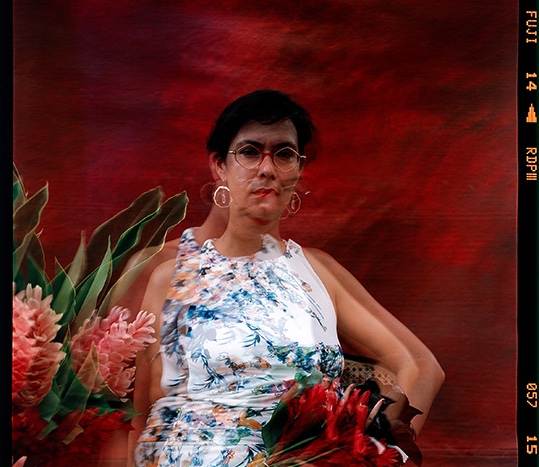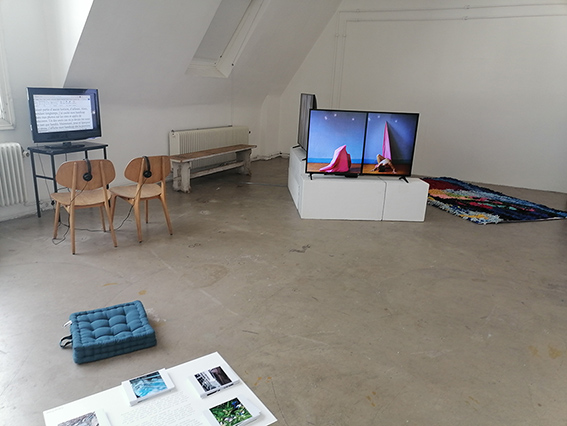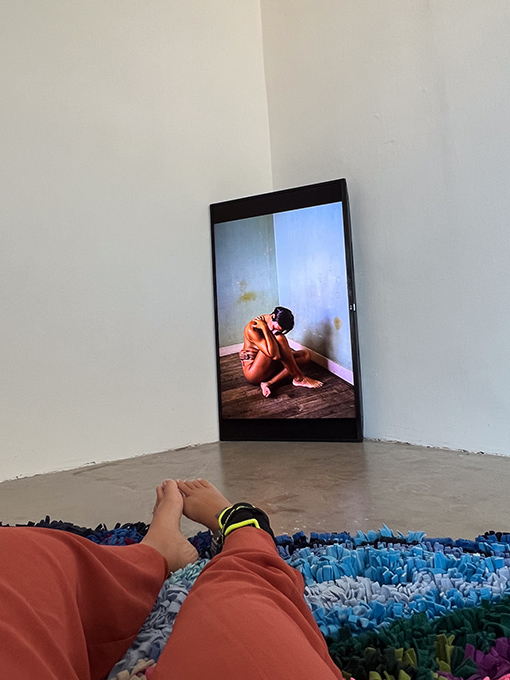
Meet Maica Gugolati: pushing boundaries between space and disciplines
#CFC Members Program #Maica GugolatiCFC Members Spotlight is a bi-monthly interview series showcasing the work of our members on our blog and social media. Through this feature, we highlight the diverse curatorial practices in our community and encourage new connections and exchange.
Meet CFC Member Maica Gugolati
Maica Gugolati is a PhD researcher in social anthropology, specialized in art and performance; artist, movie director, and performer. Invisible disabled urban dancer. Working through experimental collectivity between research, reflexivity, and contemporary mixed media art, collaborative methodology, transdisciplinarity, feminism and decolonial pratices. Affiliated researcher at Imaf Institute France, member of AICA International.
We recently interviewed Maica Gugolati to learn more about her curatorial journey, inspirations, and insights into the art world.
Image credit: Gugolati, (invited) Ostensible Collectif, and Greco”s art works, in Feel(in) the Gaps. Invisible Disability exhibition with: Letícia Barreto, Maica Gugolati, Cinzia Greco, Jaime Lee Loy, and Gabrielle Le Roux.
CFC: What inspired you to pursue a career as a curator? Was there a particular moment or experience that sparked your interest?
MG: To me, it started organically when I was a child. I was the daughter of an artist; I spent many hours of my life debating, brainstorming ideas and philosophies, mounting artworks, visiting art studios, listening to projects’ embryos, and visiting failed and successful exhibitions with my family. It has always been a family “activity”. Professionally, as an anthropologist, I got closer to the art world in tropical areas of the Majority World. I started my path by asking artists to teach me how to go beyond official and standardized expectations and censorship. Observing, chatting, and co-creating with them let me become a hybrid entity, feeling that “almost everything is possible” while connecting it to radical critical practices and adaptability to economic means and space. The observation of that peculiar space between the act of listening to the artists’ stories, the realities behind their projects, their wishes, and mine, all together with sensoriality linked to the space and the situated histories of the location (from anthropology) where the show takes place, marked my professional practice.
CFC: What thread or idea ties your work together?
MG: Transdisciplinarity. Co-creation blurring the boundaries of professional étiquettes and practices.
CFC: Name a project or exhibition that holds special significance for you. What made it stand out?
MG: Alice Yard section at Documenta 15th, Kassel 2022. I loved learning how conviviality can become the catalyst of curatorship. The exhibition space kept changing, blurring the difference between the personal living space and the exhibitory one. It showed changeability as an artifact and the process as artwork, challenging the exhibitory space and the sense of interaction with or without the artwork itself. It offered the possibility to work interdisciplinarirly on a low-cost budget.
Image credit: Gugolati Galazzini interactive project. Courtesy of Maica Gugolati.
CFC: What’s your favorite part about being a curator? And, if you don’t mind sharing, what’s the most challenging?
MG: My favorite part of being a curator is the possibility of co-creating with artists and becoming a part of a whole. I love the possibility of pushing boundaries between space and disciplines. It provides a tremendous theoretical and spatial creation action where you could really “care” for each other with artists. It is an exercise of mutual trust and transparency. It teaches you how to preserve and push boundaries. The most challenging ones are the capitalistic dependence on funding and the loneliness due to the precarious conditions that creators usually live in. Sometimes, there is a sense of invasive competition between colleagues and a lack of information sharing. On-site, the most challenging and frustrating feeling is the possibility of “doing” whatever you want, facing its impossibility due to strict planning ahead and bureaucracies.
CFC: Any hot takes on the current state of the curatorial field or the art world in general? What do we need more or less of?
MG: Unfortunately, in recent times, I have seen a tendency to fear risk. There is a tendency almost to fetishize a subjective sense of identity as the only motor of creation, leaving on a side the consciousness of the state of the art of global creative production. With the fear of curatorial risk, thematics are more standardized, less politically “incorrect,” and more domesticated. This, of course, depends a lot on economic and cultural recession, lack of funding, accessibility to possibilities, and the market relationship between production, expenses, and final gains.
CFC: What advice would you give to aspiring curators just starting their careers?
MG: To have any kind of experiences and practices about curatorships without limiting yourself to an institutional space, funding (even though they are very useful), and time constraints. Curating can happen at its most complex and unusual conditions. I find a lot of adrenaline when you can defeat “classical” spaces, trying to push boundaries between the ordinary action of art exhibiting and observation with the extraordinary of daily life and space.
Explore more of Maica Gugolati’s work on the Feel -in the gaps. In-visibile disabilities Facebook page.
Are you interested in learning more about our CFC membership? Dive into how to become a CFC member here.









